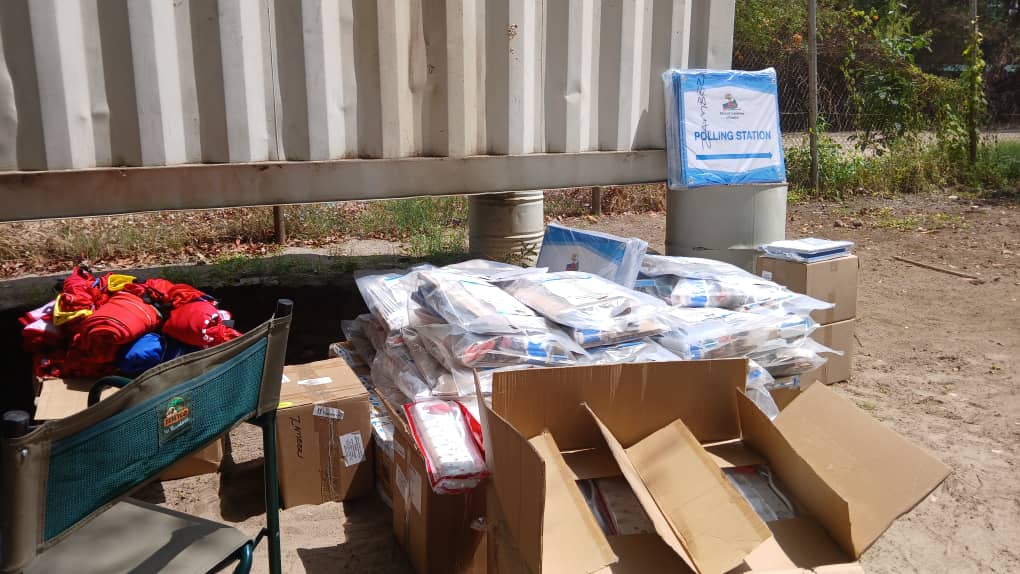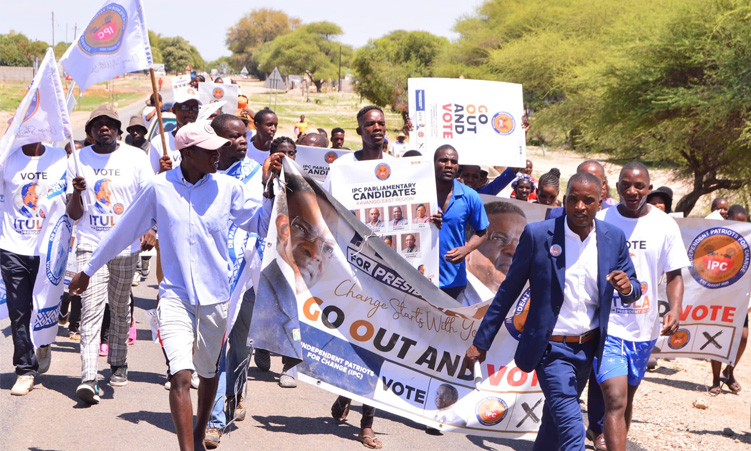MILLIONS of dollars earmarked for one of Namibia’s busiest highways will be diverted to the controversial Okahandja-Otjiwarongo road, a presidential inquiry heard on Tuesday.
Chief Executive Officer of the Road Fund Administration (RFA), Shakespeare Masiza, said the reconstruction of the road between Okahandja and Karibib would lose out as the money would be required to finance the N$180 million road linking Okahandja and Otjiwarongo. A senior engineer at the Roads Authority – the parastatal responsible for maintaining roads – disclosed last year that his company had awarded the N$180 million contract before securing sufficient funds to complete the project.Andreas Helmich said on Tuesday that N$63,8 million would be taken from the Karibib road project to complete a 58-km stretch towards Otjiwarongo from Okahandja.Two-thirds of the road was expected to be finalised by April.The rest would be done by year-end, he said.The Okahandja-Otjiwarongo road has been at the centre of the Presidential Commission of Inquiry into irregularities at the RFA and the RA, with accusations that this, and similar projects, might have been inflated to enable kickbacks to be paid to RA managers.So far no one has been found to have received bribes or kickbacks through the road maintenance projects, but the inquiry has unearthed irregularities at the two institutions, mainly at the RA, which has an annual budget of nearly N$1 billion.Questions about the controversial N$180 million contract have focused more on whether the RA’s top management took the right decision in ordering that the Okahandja-Otjiwarongo road be uprooted and rebuilt anew.Sophia Tekie, head of the road management system (RMS) in the RA, said in her testimony last year that computer-generated estimates put the cost of maintaining the highway at no more than N$80 million.Seeking to discredit the RMS, Windhoek Consulting Engineers (WCE) and RA management claimed that the computer figures were incorrect and that, in the long run, the reconstruction of the 176-km road would be less costly with a 15-year lifespan.Last week, a widely respected engineer in southern Africa appeared to support the opposing views.He told the inquiry that WCE, which did detailed research of the road, had done a “perfect job” based purely on engineering requirements.But, he added, WCE had chosen a “conservative” option.The RA based its decision on the WCE’s report.The consulting engineers’ firm is also the one supervising the construction of the road, and could earn at least N$10 million in fees.Consultant Gerrie van Zyl said: “There is no reason why I could argue with WCE’s assessment”.However, Van Zyl suggested on Thursday that he would have “re-sealed” the road at a lower cost and lengthened its usefulness up to 10 years.The road was built in the mid-1960s, and, theoretically the best lifespan of a road is 25 years.Traffic and weather conditions affect the driving conditions.Van Zyl, who has examined the disputed highway, stressed that a detailed study should never be replaced by the RMS.Of the WCE, he said: “In theory, they have done a perfect job”.But, he added: “I probably would have looked at some other options as well “… “Patching now may be a more economic option,” he said.This is largely because countries, such as Namibia needed funds badly.Helmich said the Karibib-Okahandja road would now have to wait longer.He said diverting the money would cut the costs of the Okahandja-Otjiwarongo highway by up to N$12 million because the contractors would not have to move their equipment out, only to have to return later.A senior engineer at the Roads Authority – the parastatal responsible for maintaining roads – disclosed last year that his company had awarded the N$180 million contract before securing sufficient funds to complete the project. Andreas Helmich said on Tuesday that N$63,8 million would be taken from the Karibib road project to complete a 58-km stretch towards Otjiwarongo from Okahandja. Two-thirds of the road was expected to be finalised by April. The rest would be done by year-end, he said. The Okahandja-Otjiwarongo road has been at the centre of the Presidential Commission of Inquiry into irregularities at the RFA and the RA, with accusations that this, and similar projects, might have been inflated to enable kickbacks to be paid to RA managers. So far no one has been found to have received bribes or kickbacks through the road maintenance projects, but the inquiry has unearthed irregularities at the two institutions, mainly at the RA, which has an annual budget of nearly N$1 billion. Questions about the controversial N$180 million contract have focused more on whether the RA’s top management took the right decision in ordering that the Okahandja-Otjiwarongo road be uprooted and rebuilt anew. Sophia Tekie, head of the road management system (RMS) in the RA, said in her testimony last year that computer-generated estimates put the cost of maintaining the highway at no more than N$80 million. Seeking to discredit the RMS, Windhoek Consulting Engineers (WCE) and RA management claimed that the computer figures were incorrect and that, in the long run, the reconstruction of the 176-km road would be less costly with a 15-year lifespan. Last week, a widely respected engineer in southern Africa appeared to support the opposing views. He told the inquiry that WCE, which did detailed research of the road, had done a “perfect job” based purely on engineering requirements. But, he added, WCE had chosen a “conservative” option. The RA based its decision on the WCE’s report. The consulting engineers’ firm is also the one supervising the construction of the road, and could earn at least N$10 million in fees. Consultant Gerrie van Zyl said: “There is no reason why I could argue with WCE’s assessment”. However, Van Zyl suggested on Thursday that he would have “re-sealed” the road at a lower cost and lengthened its usefulness up to 10 years. The road was built in the mid-1960s, and, theoretically the best lifespan of a road is 25 years. Traffic and weather conditions affect the driving conditions. Van Zyl, who has examined the disputed highway, stressed that a detailed study should never be replaced by the RMS. Of the WCE, he said: “In theory, they have done a perfect job”. But, he added: “I probably would have looked at some other options as well “… “Patching now may be a more economic option,” he said. This is largely because countries, such as Namibia needed funds badly. Helmich said the Karibib-Okahandja road would now have to wait longer. He said diverting the money would cut the costs of the Okahandja-Otjiwarongo highway by up to N$12 million because the contractors would not have to move their equipment out, only to have to return later.
Stay informed with The Namibian – your source for credible journalism. Get in-depth reporting and opinions for
only N$85 a month. Invest in journalism, invest in democracy –
Subscribe Now!






